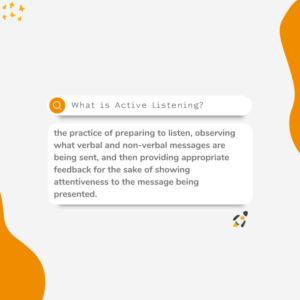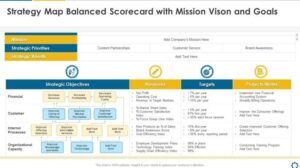
Productivity in team settings is a vital aspect of modern workplaces, where collaboration and efficiency go hand in hand. Understanding how teams can operate at their best is essential for achieving organizational goals and fostering a positive work environment. The dynamics of team interactions, the impact of effective communication, and the strategies that enhance collective output are all crucial elements that contribute to overall productivity.
This exploration delves into various factors influencing team productivity, including goal-setting techniques, the role of team-building activities, and the importance of accountability. By examining these elements, we can uncover practical insights that empower teams to function more effectively and achieve remarkable results.
Understanding Productivity in Team Settings
In the fast-paced world of modern business, productivity in team settings is crucial for achieving organizational goals and ensuring overall success. Productivity, in this context, refers to the efficiency and effectiveness with which a team achieves its objectives while maintaining high morale and collaboration among its members.Measuring productivity in teams is essential as it provides insights into how well team members work together and contribute to common goals.
Understanding these dynamics can help identify strengths and weaknesses within the team, leading to better decision-making and resource allocation. Several factors influence productivity levels among team members, including individual skills, team composition, communication styles, and organizational culture.
Factors Influencing Productivity Levels
Several elements play a significant role in determining productivity within teams. These include:
- Individual Skill Sets: The diverse skills and expertise of team members can either enhance or hinder productivity, depending on how well they complement each other.
- Communication: Effective communication fosters collaboration and minimizes misunderstandings, contributing to higher productivity levels.
- Motivation: A team that is motivated and feels valued will typically perform better and achieve more than one that lacks engagement.
- Leadership: Strong leadership can inspire and guide teams, setting the tone for productivity and collaboration.
- Organizational Support: Resources, training, and a supportive environment can significantly impact a team’s ability to be productive.
Strategies for Enhancing Team Productivity
Enhancing productivity within teams involves implementing effective strategies that streamline processes and foster a collaborative culture. Here are some key techniques:
Setting Clear Goals and Expectations
Establishing specific, measurable, achievable, relevant, and time-bound (SMART) goals is essential for team success. Clear objectives guide team efforts and help maintain focus on priorities. When team members understand their roles and responsibilities, it leads to increased accountability and better overall performance.
Optimizing Team Collaboration Tools
Utilizing the right tools for communication and collaboration can greatly enhance team productivity. Tools like project management software and instant messaging platforms facilitate real-time communication and streamline workflows. Ensuring that all team members are trained to use these tools effectively is critical.
Establishing Accountability
Creating a culture of accountability within teams encourages members to take ownership of their tasks and responsibilities. Regular check-ins, performance reviews, and feedback loops can help maintain this accountability and ensure that everyone is aligned with the team’s objectives.
The Role of Team Building in Productivity
Team building is an invaluable aspect of enhancing productivity. When team members engage in activities designed to strengthen relationships, it often leads to higher morale and improved efficiency.
Effective Team-Building Activities
Engaging in team-building activities can boost team spirit and collaboration. Examples include:
- Workshops: Skill-building workshops focused on teamwork and communication can improve collaboration.
- Outdoor Activities: Activities like hiking or team sports can strengthen bonds and enhance trust among team members.
- Volunteer Work: Working together for a cause can foster unity and create a sense of purpose.
Trust and Communication
Trust is fundamental to team performance. When team members trust one another, communication flows more freely, resulting in better collaboration and problem-solving. Establishing open lines of communication and encouraging transparency can significantly impact productivity outcomes.
Team Cohesion and Productivity Outcomes
Cohesive teams tend to perform better. When members feel connected and committed to one another, they are more likely to collaborate effectively, share ideas, and support each other in achieving common goals.
Workplace Communication and Its Impact on Productivity
Effective communication is the backbone of productive teamwork. Establishing and maintaining clear communication channels can significantly enhance team dynamics and output.
Best Practices for Effective Communication
To facilitate better communication among team members, consider the following practices:
- Regular Meetings: Schedule consistent check-ins to discuss progress, challenges, and upcoming tasks.
- Open-Door Policies: Encourage team members to voice concerns or suggestions without hesitation.
- Utilizing Technology: Leverage communication platforms to keep everyone informed and engaged.
The Role of Feedback
Constructive feedback serves as a powerful tool for enhancing workplace productivity. Regular feedback helps team members understand their strengths and areas for improvement, allowing for continuous growth and development.
Addressing Communication Barriers
Identifying and mitigating communication barriers is vital. Factors such as language differences, remote work challenges, and cultural disparities can hinder effective communication. Implementing training and fostering an inclusive culture can help overcome these obstacles.
Business Management Techniques for Productive Teams
Effective business management plays a critical role in fostering productivity within teams. Different leadership styles and management techniques can make a significant difference.
Leadership Styles That Promote Productivity

Certain leadership styles, such as transformational and servant leadership, are known to inspire and motivate teams. Leaders who prioritize team development and empowerment can drive productivity and engagement.
Performance Management Systems
Implementing performance management systems can help track team progress and promote accountability. These systems provide a structured approach to evaluating and enhancing team performance.
Ongoing Training and Development
Investing in continuous training and development ensures that team members have the skills and knowledge necessary to excel in their roles. Regular training sessions not only boost individual capabilities but also contribute to overall team productivity.
Marketing Direct and Its Influence on Team Output
Marketing strategies play a pivotal role in aligning team goals with broader organizational objectives, ultimately influencing team productivity.
Aligning Marketing Strategies with Team Goals
When marketing initiatives are aligned with team objectives, it creates a unified direction and purpose. Clear communication of these goals to team members fosters collaboration and enhances productivity.
Integrating Marketing Efforts
Effective integration of marketing efforts within teams ensures that all members are on the same page. This approach can lead to innovative solutions and improved performance.
Measuring Marketing Initiatives
Regular assessment of marketing initiatives allows teams to adapt strategies based on performance data. This practice not only informs decision-making but also drives team motivation and productivity.
Exploring Business Innovation Through Team Collaboration
Innovation is often a collective effort. Team collaboration can spark creative ideas and lead to groundbreaking solutions.
Fostering Innovative Thinking
Teams that encourage innovative thinking through brainstorming sessions and open discussions tend to generate more creative solutions. Establishing a safe space for idea sharing is crucial.
Successful Team-Driven Innovations
Examples of successful team-driven innovations showcase the power of collaboration. Many companies have thrived due to ideas generated from team brainstorming sessions, demonstrating the potential of collective effort.
Innovation and Team Productivity
There is a strong relationship between innovation and team productivity. Innovative teams are typically more engaged and find novel ways to solve problems, leading to improved performance.
The Impact of Business Outsourcing on Team Efficiency
Outsourcing can be a strategic move to enhance team productivity by allowing internal teams to focus on core tasks.
Effects of Outsourcing on Productivity
Outsourcing non-core functions can free up team members to concentrate on strategic initiatives, resulting in improved efficiency and productivity.
Managing Outsourced Teams
Effective management of outsourced teams is essential for maintaining productivity. Regular communication and clear expectations can bridge the gap between internal and external teams.
Tasks Suitable for Outsourcing
Identifying tasks suitable for outsourcing, such as administrative work or customer service, can enhance team focus on higher-value activities.
Risk Management in Team Settings
Managing risks is critical to maintaining productivity in teams. Proactive measures can help mitigate potential disruptions.
Identifying and Mitigating Risks
Teams should regularly assess potential risks to productivity and develop strategies to mitigate them. This proactive approach ensures smoother operations.
Developing a Risk Management Plan
Creating a comprehensive risk management plan allows teams to respond effectively to unforeseen challenges, preserving productivity levels.
Contingency Planning
Establishing contingency plans enables teams to adapt quickly to changes, ensuring continued focus on goals even in the face of adversity.
The Intersection of Sales Management and Team Productivity
Sales targets and team productivity are closely interconnected. Effective management of sales teams can lead to higher output.
Structuring Sales Targets
Setting achievable yet challenging sales targets can motivate teams and drive performance. Clear targets provide direction and purpose.
Training Sales Teams
Effective training programs equip sales teams with the necessary skills and knowledge to excel, ultimately enhancing productivity.
Using Sales Data for Improvement
Analyzing sales data allows teams to identify trends and areas for improvement, informing strategies for boosting performance.
The Importance of Workplace Safety in Promoting Productivity
A safe work environment is essential for maximizing team productivity.
Safety Protocols
Implementing robust safety protocols ensures that team members feel secure and valued, contributing to a productive atmosphere.
Implications of Workplace Safety

Workplace safety significantly impacts team morale and output. A culture prioritizing safety fosters trust and collaboration.
Cultivating a Safety Culture
Encouraging a culture of safety involves regular training and open discussions about safety measures, reinforcing the importance of a secure work environment.
Advancements in Business Networking for Team Efficiency
Business networking can open doors for collaboration and enhance team productivity.
Networking Opportunities
Engaging in networking events and professional communities can lead to valuable collaborations, fostering team efficiency.
Building a Strong Professional Network
Developing a robust network involves strategic relationship-building and active participation in industry events.
Networking and Productivity Outcomes
A strong network can enhance team productivity by providing support, resources, and opportunities for collaboration.
Strategic Planning for Effective Team Productivity
Strategic planning is vital for aligning team objectives with organizational goals, ultimately driving productivity.
Developing a Strategic Plan
Involving team members in the strategic planning process fosters a sense of ownership and commitment to achieving goals.
Aligning Objectives with Goals
Ensuring that team objectives align with broader organizational goals enhances focus and direction, facilitating improved productivity.
Successful Strategic Planning Initiatives
Examples of successful strategic planning initiatives demonstrate the effectiveness of collaborative goal-setting in improving team productivity.
Insights from Business Interviews on Team Productivity
Learning from the experiences of successful team leaders can provide valuable insights into enhancing productivity.
Key Takeaways from Interviews
Interviews with industry leaders often reveal common challenges that teams face, as well as effective strategies for overcoming them.
Common Challenges and Solutions
Identifying challenges such as communication breakdowns or lack of resources allows teams to develop targeted solutions.
Expert Advice on Improvement
Insights from industry experts often highlight the importance of continuous learning and adaptability in driving team productivity.
Job Search Techniques and Their Relevance to Team Dynamics
Effective job search techniques are crucial for assembling productive teams.
Demonstrating Teamwork Skills
Candidates should showcase their teamwork skills during interviews, emphasizing their ability to collaborate effectively.
Importance of Cultural Fit
Cultural fit is essential for building cohesive teams. Ensuring alignment between candidates’ values and the organization’s culture can lead to increased productivity.
Evaluating Team Potential
Employers should develop strategies for assessing candidates’ potential to contribute to team dynamics during the hiring process.
Closure
In conclusion, enhancing productivity in team settings requires a multifaceted approach that includes clear communication, strategic goal alignment, and fostering a cohesive team environment. When teams are well-equipped with the right tools and strategies, they not only boost their own efficiency but also contribute significantly to the organization’s success. Embracing these principles can lead to a thriving workplace where collaboration flourishes and productivity soars.
Essential Questionnaire
What is the main factor that affects team productivity?
The main factor is effective communication, which ensures that all team members are on the same page and can collaborate seamlessly.
How can I measure productivity in my team?
Productivity can be measured through key performance indicators (KPIs), project completion rates, and feedback from team members on their workflows.
What role does leadership play in team productivity?
Leadership is crucial as it sets the tone for team culture, motivates members, and provides guidance on achieving collective goals.
How often should teams engage in team-building activities?
Teams should engage in team-building activities regularly, ideally quarterly, to foster relationships and enhance collaboration.
Can remote teams be as productive as in-office teams?
Yes, remote teams can be equally productive with the right tools, communication strategies, and a strong focus on accountability and goals.




